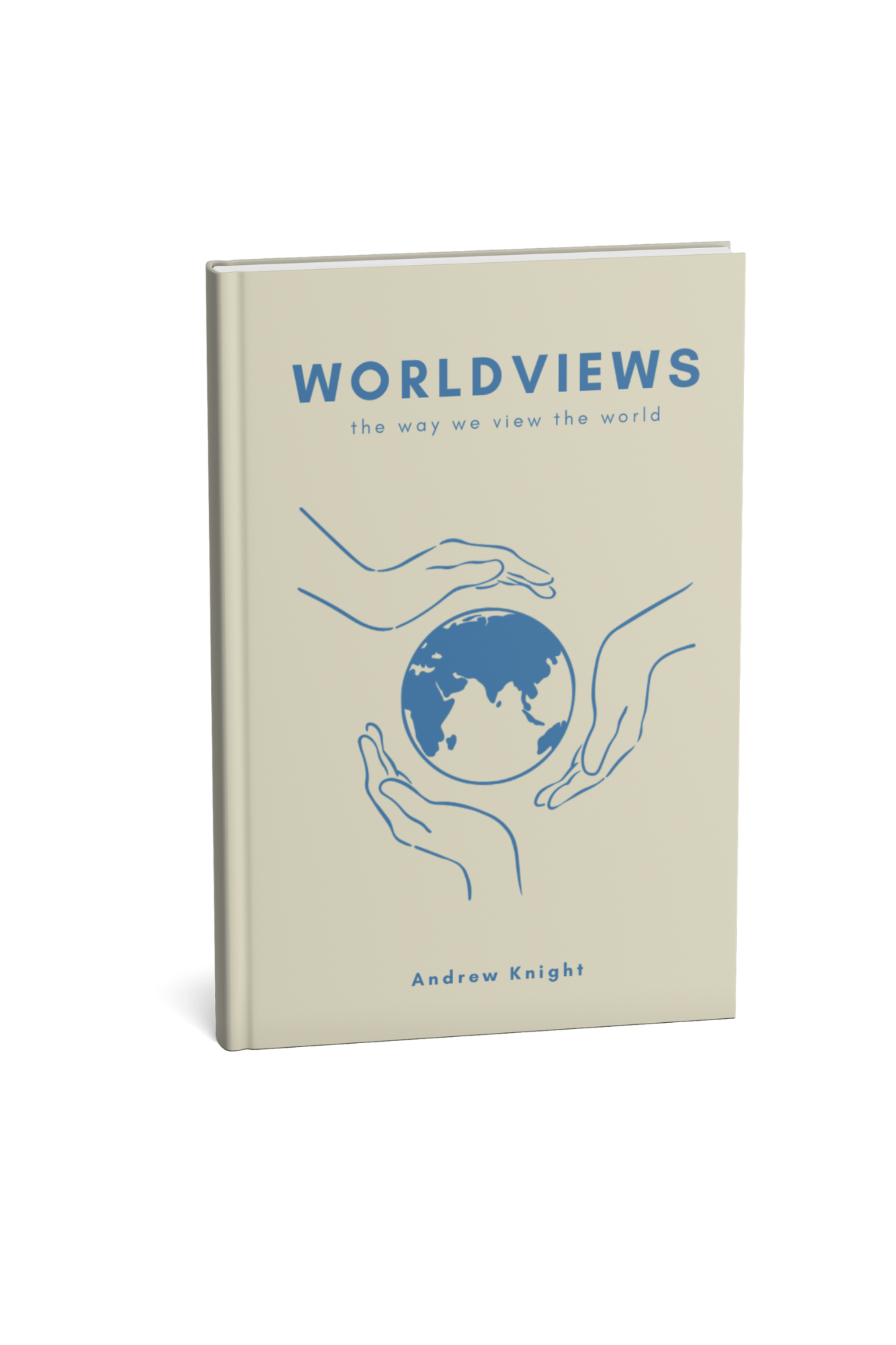 Image 1 of 1
Image 1 of 1


Worldviews: the way we view the World
“Worldviews” is a short book that aims to help us understand our personal views of the world. Through a series of diagrams, questions, grids, and quotations, the booklet walks the reader through three essential questions:
1) What is your view of the world?
2) What is the basis for your view?
3) Is your view tried and true?
The following pages (comprising three separate sessions designed for discussion with a partner) aim to help the reader arrive at their own answer, rather than a predetermined outcome. First, each section seeks to assist the reader with worldview awareness. The chief goal is to realize and understand what you believe, not change what you believe. Therefore, use them accordingly.
This book has been formatted to encourage verbal processing and dialogue. The most productive use of the following pages is to meet with another person over three sessions to uncover your own worldview and understand your fellow reader’s worldview.
How do I use the booklets?
The Worldview book combines quotations, diagrams, and questions to steer the reader through each study. Each combination of even and odd pages is to be read together and used to answer the discussion question at the bottom of each left-hand page.
The three discussion chapters (worldview, authority, truth) include four sections. So, each study will have four discussion questions for you to interact over with a friend or colleague. Use the diagrams and illustrations to aid your understanding of each discussion question. If you aren’t sure how to respond to a question, pass over it and use the time before the following study to process it further. After the studies, you will be prompted to take a worldview test in part two of this booklet. The inventory measures your answers and evaluates which worldview most accurately captures and describes your answer to each of the questions. Taking the inventory after study one is recommended, but not before it, so you are not overly influenced by it. Graham Cole writes an article in part three on understanding worldview as a frame of reference from a Christian’s point of view to further reinforce your understanding of a worldview.
“Worldviews” is a short book that aims to help us understand our personal views of the world. Through a series of diagrams, questions, grids, and quotations, the booklet walks the reader through three essential questions:
1) What is your view of the world?
2) What is the basis for your view?
3) Is your view tried and true?
The following pages (comprising three separate sessions designed for discussion with a partner) aim to help the reader arrive at their own answer, rather than a predetermined outcome. First, each section seeks to assist the reader with worldview awareness. The chief goal is to realize and understand what you believe, not change what you believe. Therefore, use them accordingly.
This book has been formatted to encourage verbal processing and dialogue. The most productive use of the following pages is to meet with another person over three sessions to uncover your own worldview and understand your fellow reader’s worldview.
How do I use the booklets?
The Worldview book combines quotations, diagrams, and questions to steer the reader through each study. Each combination of even and odd pages is to be read together and used to answer the discussion question at the bottom of each left-hand page.
The three discussion chapters (worldview, authority, truth) include four sections. So, each study will have four discussion questions for you to interact over with a friend or colleague. Use the diagrams and illustrations to aid your understanding of each discussion question. If you aren’t sure how to respond to a question, pass over it and use the time before the following study to process it further. After the studies, you will be prompted to take a worldview test in part two of this booklet. The inventory measures your answers and evaluates which worldview most accurately captures and describes your answer to each of the questions. Taking the inventory after study one is recommended, but not before it, so you are not overly influenced by it. Graham Cole writes an article in part three on understanding worldview as a frame of reference from a Christian’s point of view to further reinforce your understanding of a worldview.
